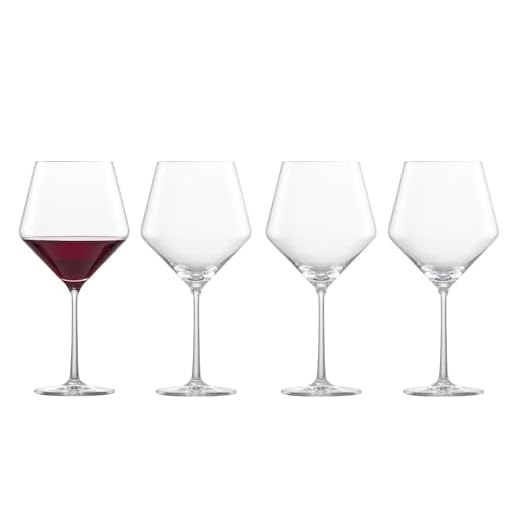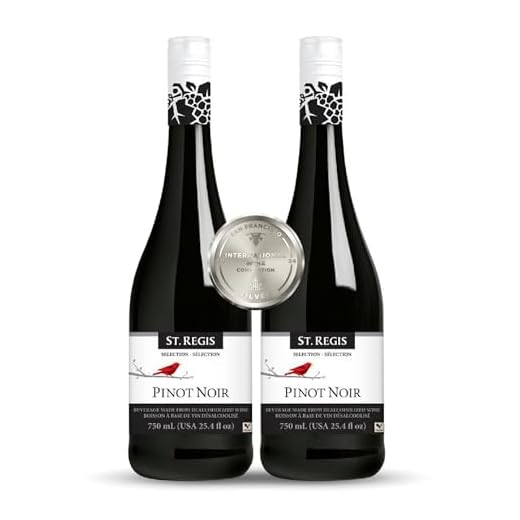



For those looking to explore the intricate flavors of this exquisite varietal, I highly recommend seeking out bottles from renowned regions such as Côte d’Or or Côte Chalonnaise. These areas produce some of the most celebrated examples, showcasing a remarkable balance of fruit and earthiness that can elevate any dining experience.
The allure of this drink lies not only in its rich hues but also in its complexity. Expect notes of cherry, plum, and subtle spices, often complemented by a silky texture that lingers on the palate. Pair it with dishes like duck confit or mushroom risotto to truly appreciate its character.
When selecting a bottle, consider vintages such as 2015 or 2019, which have been noted for their exceptional quality. Whether you’re a novice or an aficionado, understanding the nuances of this beverage can transform your appreciation and enjoyment. Embrace the journey of tasting and discovering the treasures that this region has to offer.
Burgundy’s Finest Varietals
For those seeking a refined experience, I recommend trying Pinot Noir from this renowned region. The terroir here produces grapes that yield wines with complex flavors, often characterized by cherry, raspberry, and subtle earthy undertones.
Characteristics
These varietals are often distinguished by:
- Bright acidity that balances the fruit-forward profile.
- Soft tannins, making them approachable even at a young age.
- Aging potential, where notes of leather, spice, and mushroom develop over time.
Pairing Recommendations
When it comes to food pairings, consider:
- Roasted chicken or duck, enhancing the wine’s fruitiness.
- Mushroom risotto, where earthy flavors complement each other.
- Charcuterie boards featuring aged cheeses and cured meats for a delightful contrast.
Exploring the diverse offerings from this region can lead to memorable tastings and culinary experiences. Enjoy the journey through flavors and aromas that this exceptional area has to offer.
Understanding the Terroir of Burgundy
Focusing on the unique characteristics of the region, the soil composition in this area plays a pivotal role in shaping the flavor profile of its beverages. Predominantly composed of clay and limestone, the land is known for its excellent drainage and mineral content, which directly influences the grapes’ expression. Each vineyard has a distinct microclimate, affected by factors such as elevation, proximity to water bodies, and prevailing winds, resulting in varied taste nuances even within the same varietals.
Terroir extends beyond just soil; it encompasses the entire environment where the grapes flourish. The intricate relationship between climate, geography, and viticulture practices contributes to the complexity found in each bottle. For example, the region’s cool climate is ideal for slow grape maturation, allowing for the development of rich flavors and balanced acidity. Understanding these elements can greatly enhance appreciation for the nuanced profiles derived from this celebrated production area.
For those exploring offerings from this famed locale, it is advisable to pay attention to the specific appellations. Each sub-region, such as Côte d’Or, Côte Chalonnaise, and Mâconnais, brings its own distinct characteristics, influenced by local traditions and vineyard management techniques. Whether you seek a full-bodied experience or something more delicate, knowing the terroir can guide you toward selections that will pair beautifully with a variety of dishes.
In my experience, discussing the nuances of this area elevates the tasting experience. Sharing insights about the land where the grapes are cultivated enriches the understanding of each sip. Engaging with the history and practices of specific vineyards adds depth to the enjoyment, making every encounter with these beverages a personal exploration of flavor and tradition.
Key Grape Varieties Used in Burgundy Red Wine
The primary grape variety that defines the character of this esteemed beverage is Pinot Noir. This grape thrives in the unique climate and soil of the region, allowing for an array of flavors ranging from red berries to earthy undertones. When selecting a bottle, look for those from renowned vineyards such as Romanée-Conti or Clos de Vougeot, as they often highlight the grape’s potential.
Another noteworthy variety is Gamay, predominantly found in the Beaujolais region adjacent to Burgundy. While not as prevalent in the upper echelons of Burgundy, its inclusion in certain blends can offer a lighter, fruitier profile, making it a delightful choice for casual drinking.
Understanding the differences among clones of Pinot Noir is essential. Clones like PN 115 and PN 777 bring distinct characteristics to the glass, influencing everything from aroma to mouthfeel. Experimenting with various producers showcasing different clones can yield fascinating insights into the nuances of this grape.
For those interested in exploring lesser-known varieties, Pinot Blanc and Pinot Gris sometimes find their way into blends, offering a unique twist in specific cuvées. These grapes provide additional complexity and can enhance the overall experience of the tasting.
As you delve into the world of these varietals, pay attention to the vintage. Weather conditions significantly impact grape development, leading to variations in flavor and quality from year to year. Always seek out information on the specific harvest to fully appreciate the subtleties within each bottle.
Food Pairing Recommendations for Burgundy Red Wine
Grilled duck breast creates an exquisite match with a well-structured Pinot Noir. The smoky flavors harmonize beautifully with the wine’s fruitiness.
Coq au Vin, a classic French dish, complements the earthy undertones of the varietal, enhancing the overall dining experience.
For a vegetarian option, consider mushroom risotto. The umami notes from the mushrooms amplify the wine’s complexity.
Charcuterie boards featuring cured meats, such as prosciutto and salami, are fantastic companions, allowing the wine’s acidity to cut through the richness.
Cheese lovers should try Brie or Camembert. Their creamy textures pair excellently with the wine’s tannins, creating a rich balance.
Roasted vegetables drizzled with balsamic glaze serve as a delightful side, bringing out the wine’s fruit components.
| Food Pairing | Wine Characteristics |
|---|---|
| Grilled Duck Breast | Fruity, Smoky |
| Coq au Vin | Earthy, Robust |
| Mushroom Risotto | Complex, Umami |
| Charcuterie Board | Acidic, Rich |
| Brie or Camembert | Tannic, Creamy |
| Roasted Vegetables | Fruity, Balanced |
For more interesting insights, check out this article on how do mobile valeters use pressure washer without water.
How to Properly Serve Burgundy Red Wine
Serve at a temperature between 55°F and 65°F (13°C to 18°C) for optimal flavor expression.
Follow these steps for an exceptional experience:
- Use a large, wide-bowled glass to enhance aeration. This shape allows the aromas to concentrate.
- Decant young wines for at least 30 minutes to 1 hour. This process allows the wine to breathe and softens tannins.
- For more mature selections, handle gently. Pour slowly to avoid disturbing sediment.
- Serve about a third full to leave space for swirling, which releases aromas.
Consider the following recommendations:
- Avoid overchilling, as cooler temperatures can mute flavors.
- Keep the bottle in a bucket of ice water for quick adjustments if the wine is served too warm.
- If serving multiple bottles, pre-select based on the meal to streamline the evening.
Always remember that proper serving enhances enjoyment and showcases the wine’s unique characteristics.
Identifying Quality Indicators in Burgundy Red Wine
Look for clarity and brilliance in the liquid; a high-quality pour should be free of cloudiness, indicating careful winemaking. The color should display a deep and rich hue, often suggesting the grape’s ripeness and the wine’s extraction process.
Aroma Profile
Pay attention to the aromatic complexity. Quality offerings will present a range of scents, from ripe fruits like cherry and raspberry to earthy notes such as forest floor or mushroom. Subtle nuances of spice and oak can enhance the profile, revealing careful aging techniques.
Taste and Structure
On the palate, a well-crafted option will balance acidity, tannins, and fruit. The finish should be long and lingering, showcasing the wine’s depth. Consider the mouthfeel: a velvety texture often indicates good quality. Look for layers of flavor that unfold with each sip, reflecting the wine’s origin and craftsmanship.
Lastly, assess the potential for aging. Quality examples will exhibit a structure that can develop further complexity over time, making them suitable for cellaring. Always seek out reputable producers and vineyard sites known for excellence to ensure a rewarding experience.








